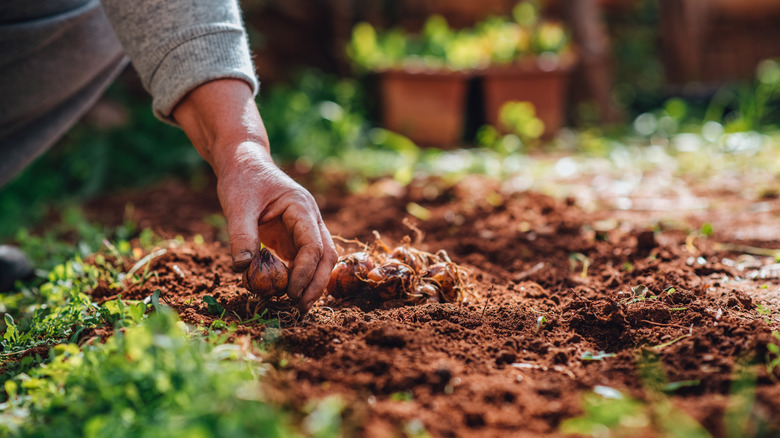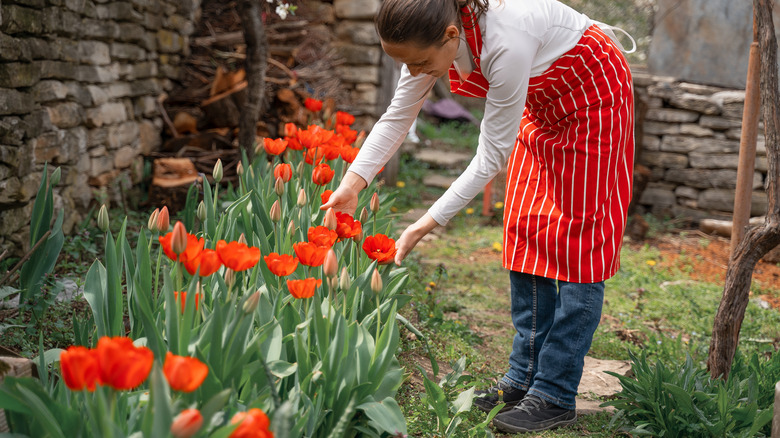Tulips are a beautiful statement feature in flowerbeds, with their stunning velvety petals bursting to life in a wonderful variety of colors. Sadly, blooming time is relatively short-lived, despite tulips being perennials that are meant to flower every year. There is a secret to getting a beautiful and healthy repeat of blooms each year though — you must provide your tulips with proper nutrition by enriching the soil with fertilizer at the right times.
In the wild, a tulip plant is in bloom for less than two weeks, and even as short as just a few days in warmer climates. If you’re a beginner gardener, you may wonder how others manage to achieve pretty displays for longer. It’s common practice to extend blooming in gardens by planting a variety of types of tulips that flower at different times. Whether you wish to go this route or not, you’ll need to make sure that you get the fertilization just right by adding a thick top layer of organic compost, along with synthetic fertilizer, at the time of planting in fall, and again in the following spring.
How to fertilize your tulips

Did you know that if you slice a dormant tulip bulb in half you’ll find next spring’s flower bud inside? It’s like a little flower baby, visibly developed and waiting to be born. When you think of it this way, it makes even more sense that feeding the plant is essential, as it assists the growth of the flower inside the bulb. So, let’s take a look at the best method to do this.
The best time to plant tulip bulbs is in fall. After planting, you should top dress the soil bed with organic compost and a slow-release fertilizer. When deciding which fertilizer to use, it’s important to understand what the three numbers on the label mean. They represent the percentages of the three main nutrients your plant needs, which are nitrogen, phosphorous, and potassium. For your tulips, you’ll need one that says 10-10-10 or 10-15-10.
It’s important not to add the fertilizer into the actual hole you have planted your bulb in, as this could damage it. You can help your plant access the fertilizer you have sprinkled over the top by watering it well so it disperses into the soil. You’ll need to fertilize again in the same way when fresh shoots start to show in spring. Continue to do this twice annually at the same times each year.
Why you should still fertilize dormant tulip bulbs

You may wonder the purpose of fertilizing if the bulbs are already set and lying dormant over the summer period. It is because the bulbs, though dormant, have a spurt of root growth in fall and will be able to benefit from the fertilizer that you have provided, prompting the bulbs to make and store food.
Other tips to get your tulips to bloom in spring include planting your tulips in an area where they will get access to full sun. Additionally, planting them in mounds will help to drain the soil, as tulips are happier and more likely to flourish in dry soil. Choosing the right kind of tulips to grow is also really important if you’re looking for repeating blooms. Botanical tulips, like water lily and greigii, and hybrids like Darwin and triumph, have the potential to grow more naturally. Alas, if you live in an area that simply isn’t tulip-friendly, there’s nothing wrong with resorting to treating tulips as annuals rather than perennials.



